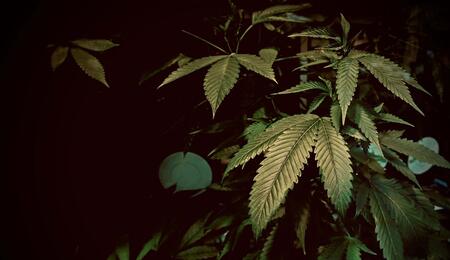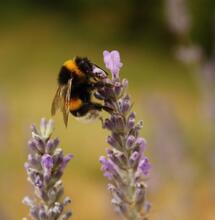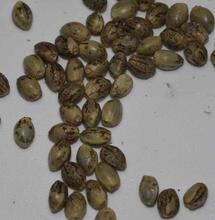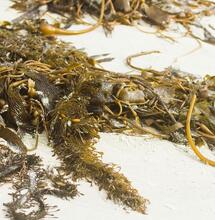How to Spot Cannabis Nutrient Deficiency

For healthy vigorous plants, growers need to administer the right nutrients. Even more importantly, growers need to react fast when they spot issues with their crops.
As anyone who’s tried to grow a cannabis plant knows, growing means juggling several different balls in the air at the same time. Cannabis plants, depending on the kind of strain, may require various nutrient solutions aside from specific water intake regimes or light exposure.
Without nutrients, the cannabis plant undergoes stress, and it can manifest with various presentations on its plant constitution. Nutrient deficiency may also make the plant more vulnerable to pests and other diseases or significantly lower yields. Therefore, growers must identify nutrients issues as soon as they appear on the plant.
When do most mistakes occur?
Novice growers are more prone to making feeding mistakes, especially with administering the three primary nutrients, nitrogen, phosphorus, and potassium. One common mistake is over-nourishing the plant with these nutrients while not giving the plant other subordinate nutrients, which the plant usually needs in smaller or even trace amounts but still dearly needs them.
How to spot cannabis nutrient deficiency?
The soil and water pH is a major indicator of how well the plant can absorb the nutrient food. If the pH values show too alkaline or acidic growing environment, administering specific nutrients to help the root system is essential. The pH scale measures acidity or alkalinity on a scale from 0 (superior acidic value) to 14 (superior alkaline value).
Pure water has a neutral value with a pH of 7.0. If the pH measuring shows a value of 8.0, it means the substance is ten times more alkaline than the neutral value, or if it’s 6.0, it means the substance is ten times more acidic than the neutral value. When it comes to cannabis, and specifically about growing in soil, the pH needs to be in the range between 5.8 and 6.8.
The between value of these two points, 6.3, would be ideal for growing in soil. The acceptable range drops to between 5.5 and 6.5, with 6.0 being ideal, for when growing in hydroponic settings for example. Every nutrient that goes into the soil or the hydroponics where your cannabis plants grow affects the pH value. Each nutrient, especially overdoing, can cause pH disbalance. Therefore, every grower should use pH test strips to measure and follow the pH of soil and water on a regular basis.
How to differentiate between nutrient deficiency types?
Nutrient deficiencies can be typically divided into mobile and immobile, with some being somewhat mobile. For instance, mobile nutrient deficiency can initially present in the oldest leaves found at the plant's base. The deficit reflects, in this case, on the old leaves before it becomes noticeable in other parts of the plant.
On the other hand, immobile nutrients stay in the same place, such as the young leaves on the top of the plant or other outer branches where it's most common for these deficiencies to manifest. Mobile nutrients include nitrogen/nitrate (N), phosphorus/ phosphate (P), and potassium (K) - basically the core foods the cannabis plant ought to receive.
Lack of magnesium (Mg) would be considered a somewhat mobile problem. Calcium (Ca) deficiency is an example of immobile nutrients deficiency on the other hand.
How to spot specific nutrient deficiencies on the plant?
Phosphorus (P)
Phosphorus deficiency manifests as slow growth and darkening leaf colors. In this case, the plant’s leaves may begin to curve toward the plant and show a brownish tan color. Failing to add enough P during the flowering stage, the plant's yield may be put in danger. This element is also needed to help the plant release accumulated energy in carbohydrates. It’s less often that cannabis plants show signs of phosphorus deficiency. You really have to screw with the plant for that to happen.
If the water or growing medium's pH is moving above the 7.0 value, it may indicate Phosphorus deficiency. It would be best if you acted fast to address the deficiency issue to prevent halted growth and miserable yield. The solutions would entail fertilizers with superior amounts of phosphorus or a bloom fertilizer.
Nitrogen
A weed plant with a nitrogen deficiency will manifest as yellow leaves, which quickly start to curl up and die. The deficit will be particularly noticeable at the bottom of the plant, where the older leaves are first to change to a lighter color. Suppose you don’t act fast to treat this initial manifestation of lack of nitrogen. In that case, soon, the entire plant will be affected by discoloration and brown spots, usually on the fan leaves' margins.
Replenishing the plant with enough nitrogen during the vegetation stage should avoid nitrogen deficiency. The plant still needs to receive nitrogen afterward, perhaps not as much, but sufficient amounts to ensure healthy buds and potent yields. Even though most growers are well aware of nitrogen's importance, as it’s one of the three most essential nutrients, nitrogen deficiency is common enough to happen. Use fertilizers with the right amount of N - P - K, and use quick fixes such as bat guano to correct the deficiency. Some strains may even benefit from solutions like urine. Act fast every time you suspect nitrogen nutrient deficiency!
Potassium (K)
With potassium deficiency, things can get a bit more messy. At first, the affected plant may appear all well and healthy, but soon enough, you may discover the bottom leaves die at a fast pace. The leaves appear with chlorotic spots, and by this time, it may be too late to do anything. Younger leaves also appear to be affected as they begin to curl up and weaken.
Without sufficient potassium, the plant basically stops growing and developing. The deficiency weakens the plant’s immune system and makes the plant an easy target for pests. Like nitrogen deficiencies, where farmers are well aware of this food element's importance, potassium deficiencies are also frequent. The fastest way to address a potassium deficiency is to use a water-soluble solution rich in potassium. If you use other natural fertilizers like bat guano, bear in mind potassium levels may not be sufficient in these fertilizers.
Zinc (Zn)
Zinc deficiencies, which also occur fairly frequently, manifest as changes in the plant constitution. Zinc deficiency is noticeable in the plant's new growth, where the leaves' veins begin to show yellowing. If the plant generally looks pale and the buds during the flowering stage appear to be distorted and twisted, the answer could owe to zinc deficiency. Where there is a zinc deficiency, it should be noted that there’s likely a lack of iron (Fe) and manganese (Mn) too. In this case, look for micronutrient solutions containing zinc, iron and manganese to replenish your plant and strengthen its constitution.
Molybdenum (Mo)
While cannabis plants require only a trace amount of molybdenum, and Mo deficiencies are relatively rare, lack of it translates to yellowing middle leaves, twisting and red discoloration on the leaves' tips. Sometimes, the leaves are curling up and dying out. This element is vital to the cannabis plant because it helps enzyme systems in nitrate chemical conversion processes.
Magnesium (Ma)
Lack of magnesium, perhaps the most essential secondary element the cannabis plant requires for successful growth and yield, manifests after a month the deficiency has started. Ring the alarm if you notice rust spots on the leaves and yellowing leave veins. This presentation will not remain local. If untreated, it will spread to the entire plant and ultimately diminish the harvest if it goes on into the flowering stage. While it's uncommon for magnesium deficiency to appear in outdoor crops, it's common enough among indoor crops.
The growing medium also determines the chances, so growing in soil should keep you safe, but growing in other mediums may require your close attention to monitoring magnesium intake. Infuse magnesium on the cannabis plant immediately when you spot the signs. Use Epsom salts to administer sufficient magnesium. Ensure that the magnesium deficiency is not actually some other similar-manifesting deficiency. While cannabis can absorb magnesium in higher amounts, it may not tolerate so well the absorbing of excess iron for instance.
Iron (Fe)
Iron deficiency is one of the semi-mobile issues. This element helps how the plant produces chlorophyll, and it's an aide to critical chemical reactions that involve nitrates. Iron deficiency reflects into the plant's new shoots and the leaves of the plant that could become almost fluorescent or even necrotic.
Calcium (Ca)
When the cannabis plant lacks calcium, its development slows down, younger leaves begin to turn dark green, and the flower production gradually sets to stands still. The root is also affected, and the yield is also significantly reduced. In the final stages of the disease, the leaves are utterly dark green with big necrotic blotches.
Lack of calcium affects vital processes in the cannabis plant, such as the plant's processing of nitrogen and sugars. Pay attention to calcium deficiency particularly if you are growing in a hydroponic setting, as water is usually low on calcium. The problem is rare to occur outdoors, but it can if you are using plant mixes to grow your plants. Look for organic solutions like lime that contain calcium to address the disbalance.
Sulfur (S)
Sulfur helps the respiration of the cannabis plant and the breaking down of fatty acids. Although sulfur deficiencies are not so common, they can occur if the soil or fertilizer is itself deficient in sulfur. An excessively high pH value of the soil and water is a major giveaway there's an undergoing sulfur deficit. The deficiency will present as brittle leaves and constitution, lime green or yellow leaves, and weak flowers with reduced potency on the plant.
Manganese (Mn)
This deficiency starts as interveinal chlorosis in new growth and continues to affect older leaves. What may seem peculiar is that the areas around the chlorosis will remain intact green. High soil pH or excess iron are the two most common causes of Manganese deficiency, so look for solutions that contain sufficient Manganese to address the issue.
Copper (Cu)
Last but not least, cannabis plants need copper only in trace amounts. When these trace amounts are absent, it might result in necrosis in younger leaves and strange bluish or even copper-like discolorations, usually at the tip of the leaves. Use copper fungicides to set the copper levels right in the soil and support the plant with nitrogen and carbohydrate processing.



